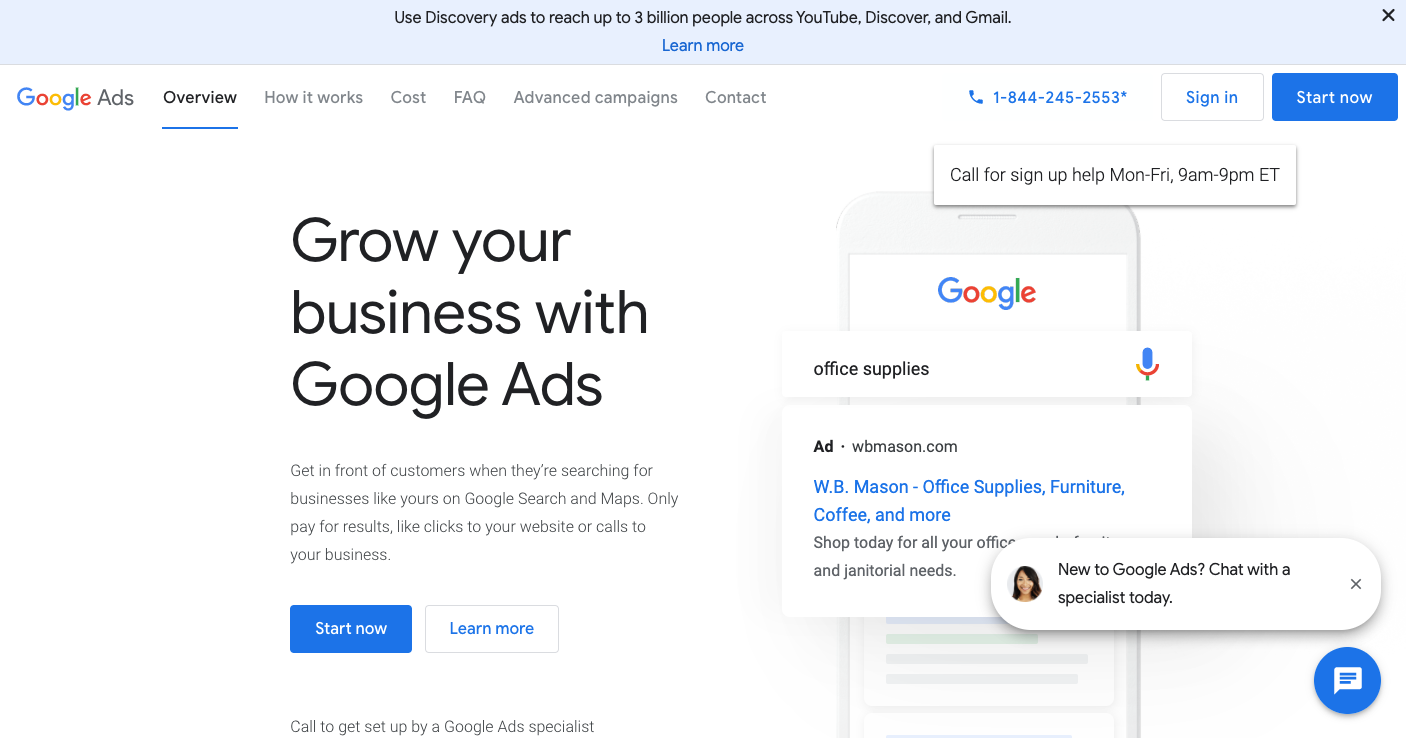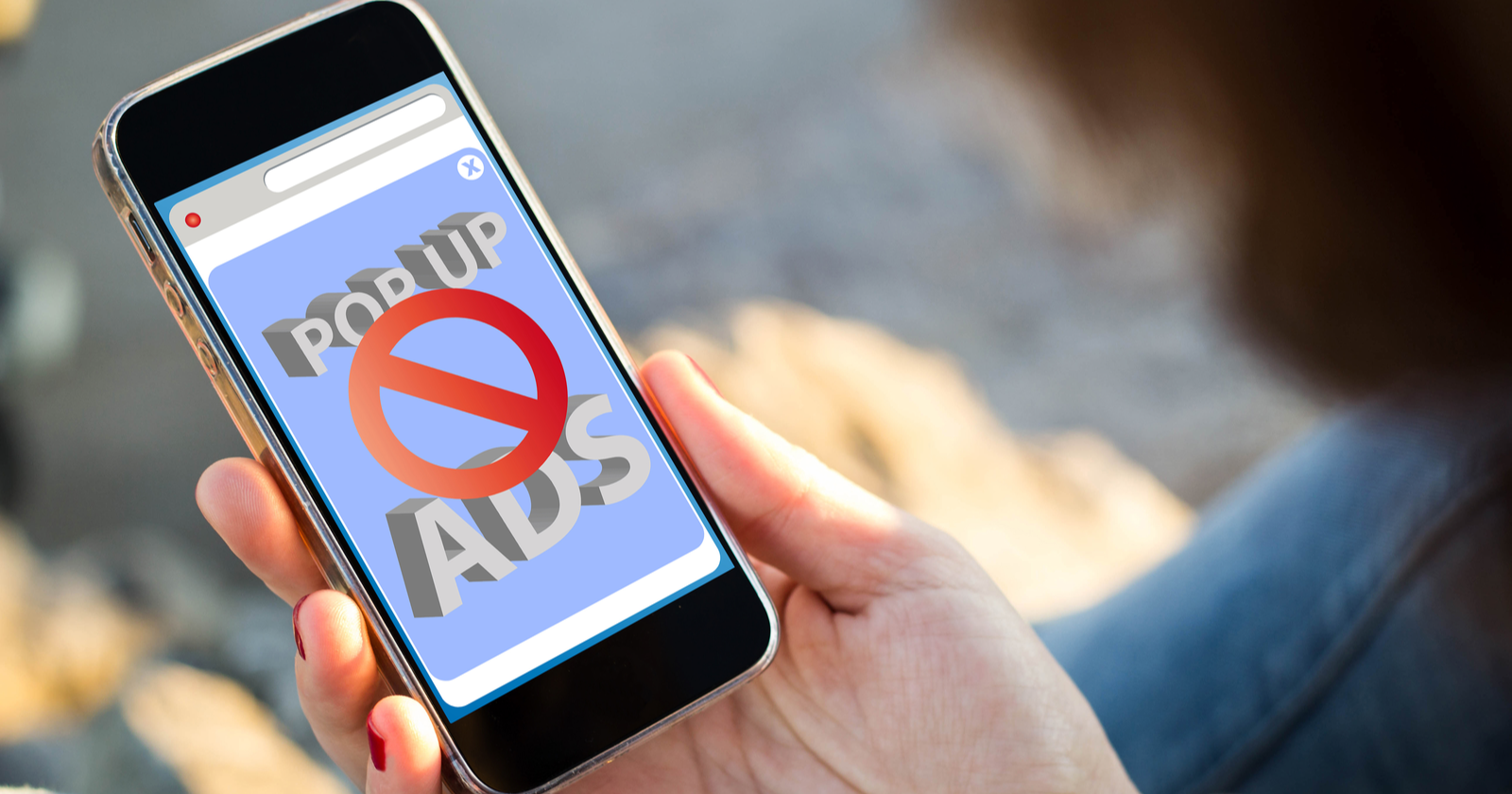Marketing Funnels: Everything You Need to Know
In this guide, I’ll show you everything you need to know about marketing funnels. Let’s get started. A marketing funnel is a visual representation of the stages a customer goes through, from first knowing about your brand to becoming...
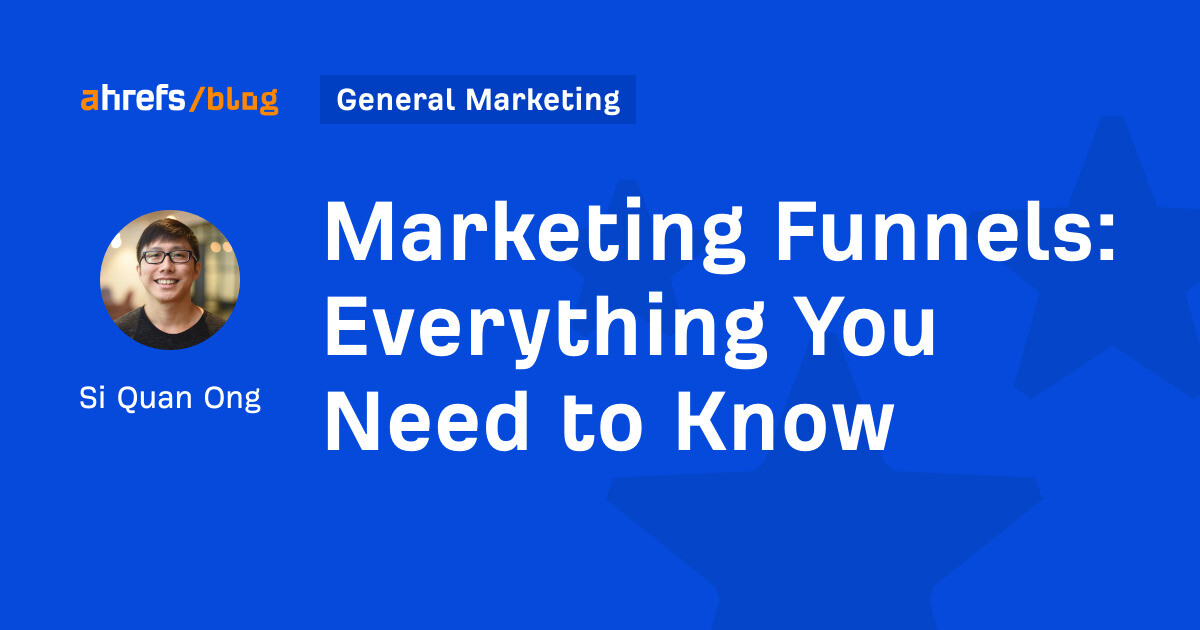
Shows how many different websites are linking to this piece of content. As a general rule, the more websites link to you, the higher you rank in Google.
Shows estimated monthly search traffic to this article according to Ahrefs data. The actual search traffic (as reported in Google Analytics) is usually 3-5 times bigger.
The number of times this article was shared on Twitter.
Knowing how a marketing funnel works can help you diagnose problems and improve your marketing strategy. In this guide, I’ll show you everything you need to know about marketing funnels. Let’s get started. A marketing funnel is a visual representation of the stages a customer goes through, from first knowing about your brand to becoming a customer. The traditional marketing funnel looks like this and is based on the AIDA model. It was first developed in 1898 by E. St. Elmo Lewis, an advertising advocate. Some marketers further simplify the marketing funnel into a three-stage model: Some marketers have found the existing model to be incomplete because it focuses solely on converting a prospect into a customer. Repeat customers that advocate for your brand are important too. So they added two more stages to the funnel: Let’s take a closer look at each stage of the funnel. The Awareness stage is when potential customers first learn about your brand. This can happen in a variety of ways: Whichever it is, they now know you exist. The next time they see your brand again, they’ll remember you. The Interest stage is when potential customers begin to express interest in your brand: Typically, they’ll indicate this interest by: They can do one or all of these actions. The more of these actions they do, the more interested they are in your brand. The Desire stage—or more commonly known today as Consideration—is when the prospect begins to evaluate your product or service. Just because they know what you do and how you can help them doesn’t mean you’re their final choice. They will evaluate alternatives, read reviews, talk to friends and family, and compare. The Action stage is the most straightforward. You are the chosen one. They’ve decided to buy from you and use your solution. While the funnel is intended to be a representation of a customer’s journey, it doesn’t work like that in the real world. When it comes to buying things, people don’t follow the funnel so linearly. Just think about your own behavior. Do you really progress through these stages in such a straightforward way? Likely not. Some people go straight to the Action stage if there is a catalyst event. Some people bounce around stages for a few months (or even years) before they hit the Action stage. Some people bounce around the stages and never progress any further. The list goes on. So the way to use the marketing funnel in reality is to use it as a mental model to tweak your marketing. In short, you’ll want to make sure you’re doing some marketing activities or creating content for each stage, so you’re targeting different people at different parts of the buyer’s journey. If you’re not, fill in the gaps. Your goal at this stage is to “open up the funnel,” i.e., introduce your brand to as many relevant people as possible. Here are some tactics to do that: Your prospects are almost certainly searching for information related to your brand on Google. So you’ll want your website visible in the search results. The beauty of search engine optimization (SEO) is that you can use it for any stage of the marketing funnel. In the Awareness stage, you’ll want to create content targeting keywords loosely related to your product or service. For example, Ahrefs is an all-in-one SEO toolset. Naturally, we’ll create content around SEO-related topics. But in order to widen the funnel, we also target keywords around broad topics like digital marketing and marketing. No matter which stage of the marketing funnel you create content for, you’ll have to do keyword research. Keyword research is the process of discovering valuable search queries that your target customers type into search engines like Google to look for products, services, and information. You can do this by entering a few relevant keywords into a tool like Ahrefs’ Keywords Explorer and then going to the Matching terms report. Here, you’ll see more than 4 million related keywords. That’s too many, so we’ll add a few filters to narrow the list down: From here, you’ll want to go through the list to find keywords that are relevant to your site. Recommended reading: Keyword Research: The Beginner’s Guide by Ahrefs Some people in your industry have built a large audience of loyal readers, listeners, and viewers. You can leverage that and expose your brand to an entirely new group of people. For example, our chief marketing officer, Tim Soulo, appears on podcasts frequently: Podcast appearances aren’t the only way. You can appear on a webinar, present at a conference, write a guest post, or co-create content (like what my colleague, Michal Pecánek, did): Curate a list of people you’d like to work with in your industry. Then reach out to them and see if they are willing to work with you. Show them what’s in it for them, and your chances of success will skyrocket. Recommended reading: Influencer Marketing: Definition, Examples, and Tactics Whether it’s mass media advertising like TV ads or digital advertising mediums like Instagram, hundreds and thousands of brands have been built using ads. It’s one of the most tried and tested tactics for building brand awareness. If you have the budget, it’s a great way to generate eyeballs for your brand. Recommended reading: 9 Tactics to Increase Brand Awareness (Tried & Tested) At this stage, your goal is twofold: The most obvious step here is to continue to create content that engages your prospects. No matter whether it’s your TikTok account or a YouTube channel, your content is likely the reason why they followed you. So that’s how you’ll keep their interest. Beyond that, here’s what you can do: A prospect can indicate their interest in your brand in various ways. But they’re not made equal. There is a hierarchy of value for each platform: Adding to my ranking: Email > Podcast > YouTube > Twitter > Instagram > TikTok > Facebook Email is the highest value “interest indication” you can get. It’s explicit permission from the prospect into their inbox, a sacred space where they conduct their most important work. You’ll want to make sure as many of them are signing up for your email list. Put up call to actions that remind them to subscribe. For example, on Ahrefs’ blog, we have a floating box beside every blog post. We also have a dedicated landing page for our newsletter: While we don’t do it, you can offer incentives to encourage sign-ups. Here’s an example from Intercom: Even as you’re building a following on other channels, make sure to regularly remind them to sign up for your email list: To summarize the 5-5-5 Method: • Person A speaks for 5 minutes Speak, listen, and resolve. Follow me @SahilBloom for more and join 225K+ who receive my newsletter weekly! https://t.co/32basvHOHZ As they sign up to your email list, you’ll want to further engage them by introducing your brand, products, services, or content to them. You can do this by creating a welcome email sequence. This can be one email or “several emails” long. For example, someone signing up for our newsletter will receive a welcome email introducing our best blog content: Besides introducing your best content, you can also: The choice is yours. In this stage, your goal is to convince them you’re the right product for the job. Here are some tactics to consider: There are likely plenty of review-type platforms in your niche. For example, G2 is a popular one in the software world. If you’re a local business, don’t forget that there are always Google reviews: You’ll want to get more reviews on these platforms. More reviews—especially high ratings—can be influential in a prospect’s decision-making. There’s no way around it, though: The best way to get more high-quality reviews is to deliver an amazing experience for your existing customers. However, even highly satisfied customers may not remember to leave reviews, so you’ll also want to ask for one when the opportunity arises. This can be when they express satisfaction (online or offline) or when they’ve used/experienced your product or service (e.g., travel websites like Airbnb and TripAdvisor tend to ask for reviews when you’ve finished your stay or tour). Finally, you’ll want to respond to these reviews. Whether they’re good or bad reviews, this study suggests that replying to them results in better ratings overall. My colleague, Andrei Țiț, replies to all our reviews: Your potential customers will compare all possible solutions. You can take control of the comparison narrative by creating a versus page. On this page, most companies will do a side-by-side comparison where they conveniently win. While that is, unfortunately, standard practice, we wanted to offer a new perspective. For our own versus page, we decided to feature third-party reviews and polls and discuss the features only our toolset has. Tim once said: My theory is that people don’t sign up for your product and then learn how to use it. It’s the opposite, in fact. They first learn how to use your product, and they sign up because they already know how to use it. Use your content to guide your prospects into visualizing how to use your product in their daily and work lives. If they see your product in action, they can imagine themselves using it. You can see how this works in all our content. Our articles feature our toolset prominently. So do our YouTube videos. We even have multiple free full-length courses that’ll show you how to solve SEO problems with our toolset: Seeing is believing. But touching or using the product will imprint it on your prospect’s mind. That’s why food companies are more than happy to offer free samples—one taste and you’ll know whether you want to buy it or not. At Ahrefs, we offer free versions of our toolset: When potential customers consume our content and are able to follow along with our free tools, we’ll be top of mind when they decide to sign up in the future. Some people in this stage may need just a little bit more encouragement to purchase. So your goal here is to give them the final “nudge”—a compelling reason to buy right now. There are various ways you can do this, such as: Recommendation This stage is also a good place to add upsells. Upselling is selling your customers add-ons to the products they’re already buying. For example, when you purchase a MacBook from the Apple Store, they’ll ask you if you want AppleCare. That’s an upsell. Likewise, when you buy a meal at McDonald’s and they ask if you want to upsize your meal. As you build your funnel, you should assign some metrics to each stage. The exact metric will vary depending on the channel or tactic you’re using, but here are some ideas: Start measuring them with tools like Google Analytics. Compare these metrics month-on-month. If you notice a decline or contrast in numbers, it means you have a problem. For example, you may notice a lot of traffic on your website, but no one is converting to your email list. From there, you’ll know there may be an issue with the Interest stage. You can experiment with tactics to improve the conversion, such as: Analyzing and improving your funnel is a never-ending process. But that’s the fun part of marketing. Keep on experimenting and you’ll find ways to improve your results. According to conventional marketing wisdom, it’s cheaper to retain customers than to acquire new ones. So you can also consider expanding beyond the traditional funnel and focusing on stages like Loyalty and Advocacy. For example, at Ahrefs, we have a customers-only community where our customers can hang out, ask questions, and provide feedback for our toolset. For the Advocacy stage, you can consider setting up a referral program so it’s easier for your customers to refer your product to their friends. That’s just the tip of the iceberg. There’s more you can do. You just have to experiment. Any questions or comments? Let me know on Twitter.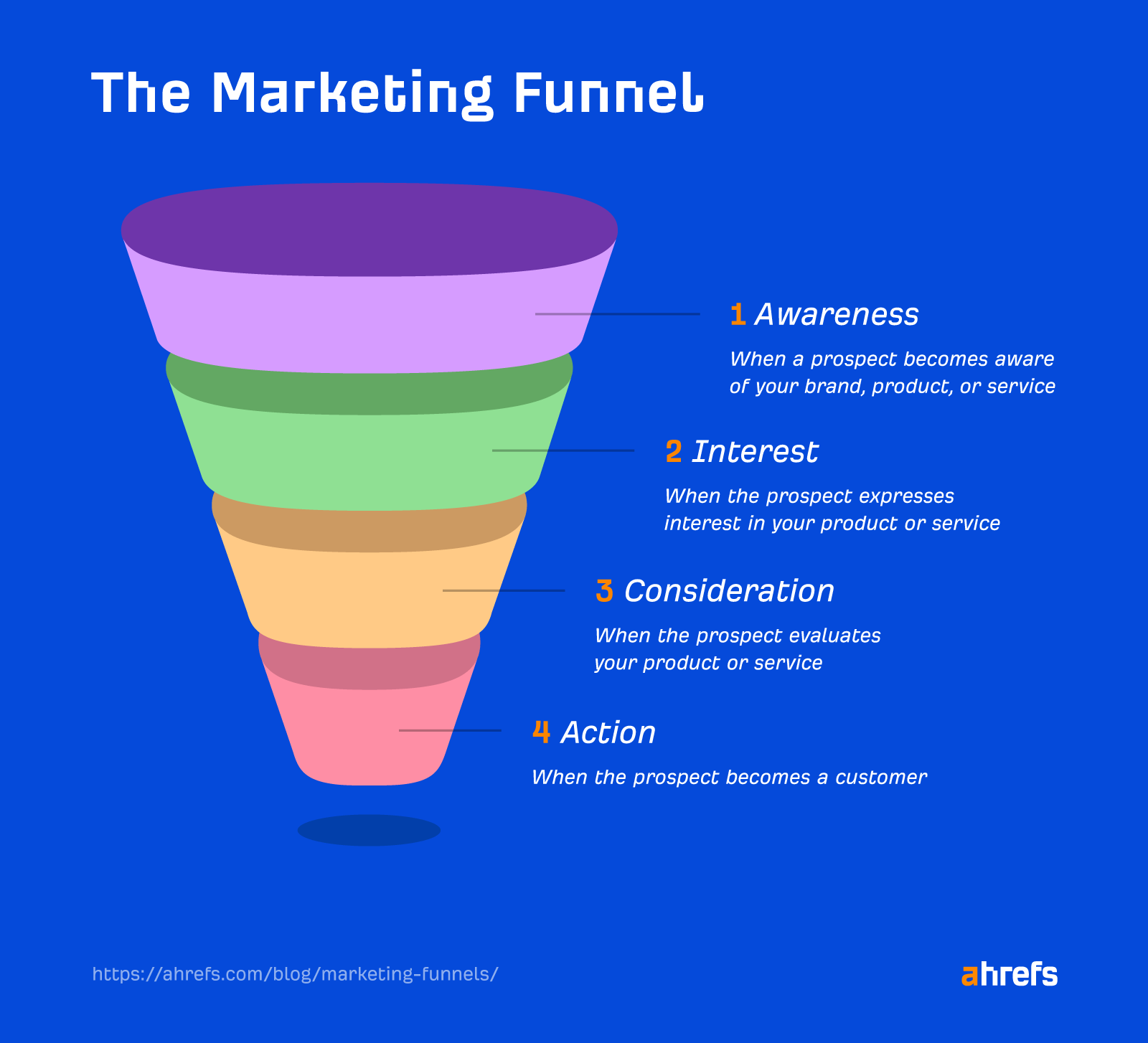

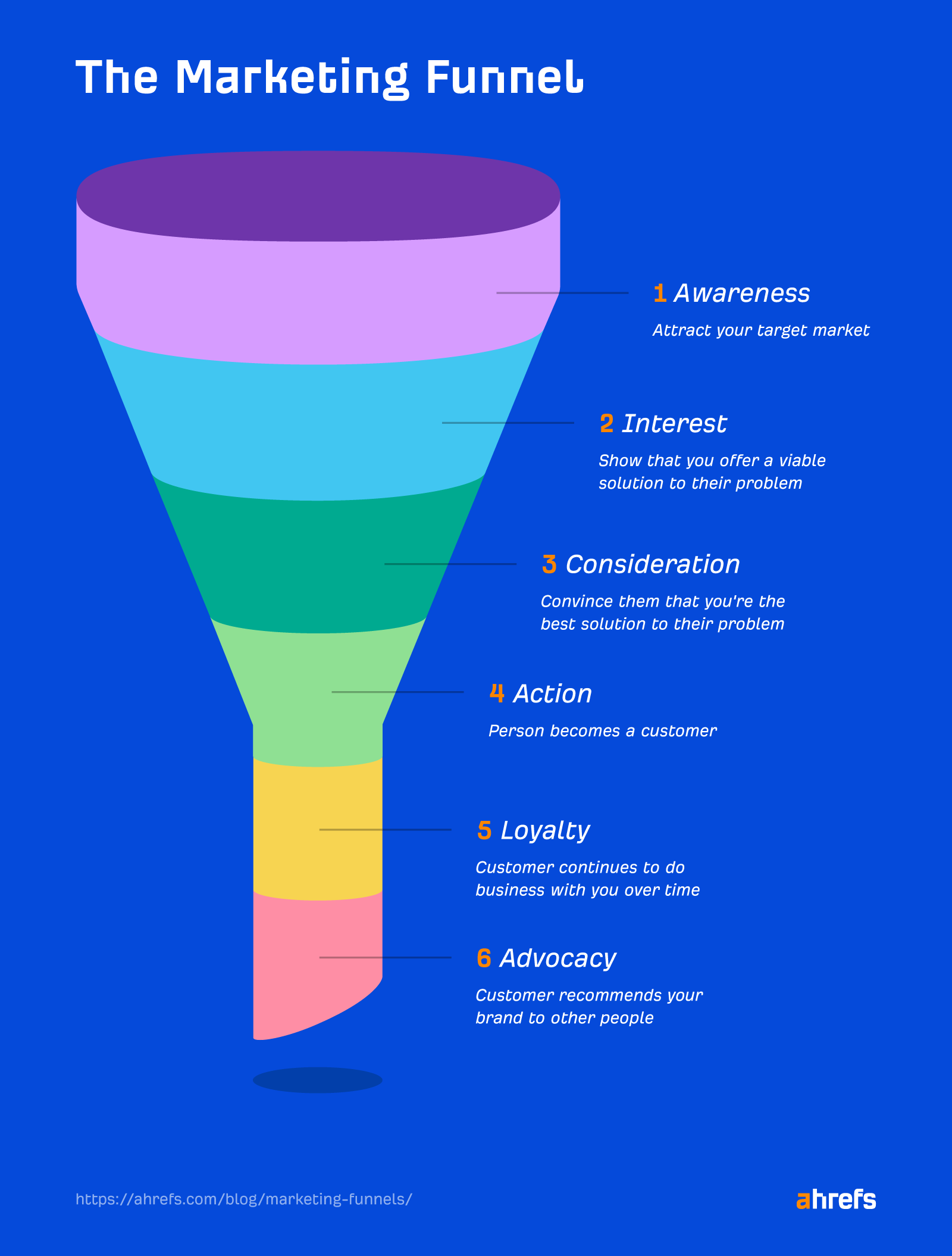
1. Awareness
2. Interest
3. Desire/Consideration
4. Action
1. Awareness
Implement a search-focused content marketing strategy



Tap into other people’s audiences

Ads
2. Interest
Get them to sign up for your email list



• Person B speaks for 5 minutes
• Joint discussion for 5 minutesCreate a welcome sequence that introduces your brand

3. Consideration
Get more reviews


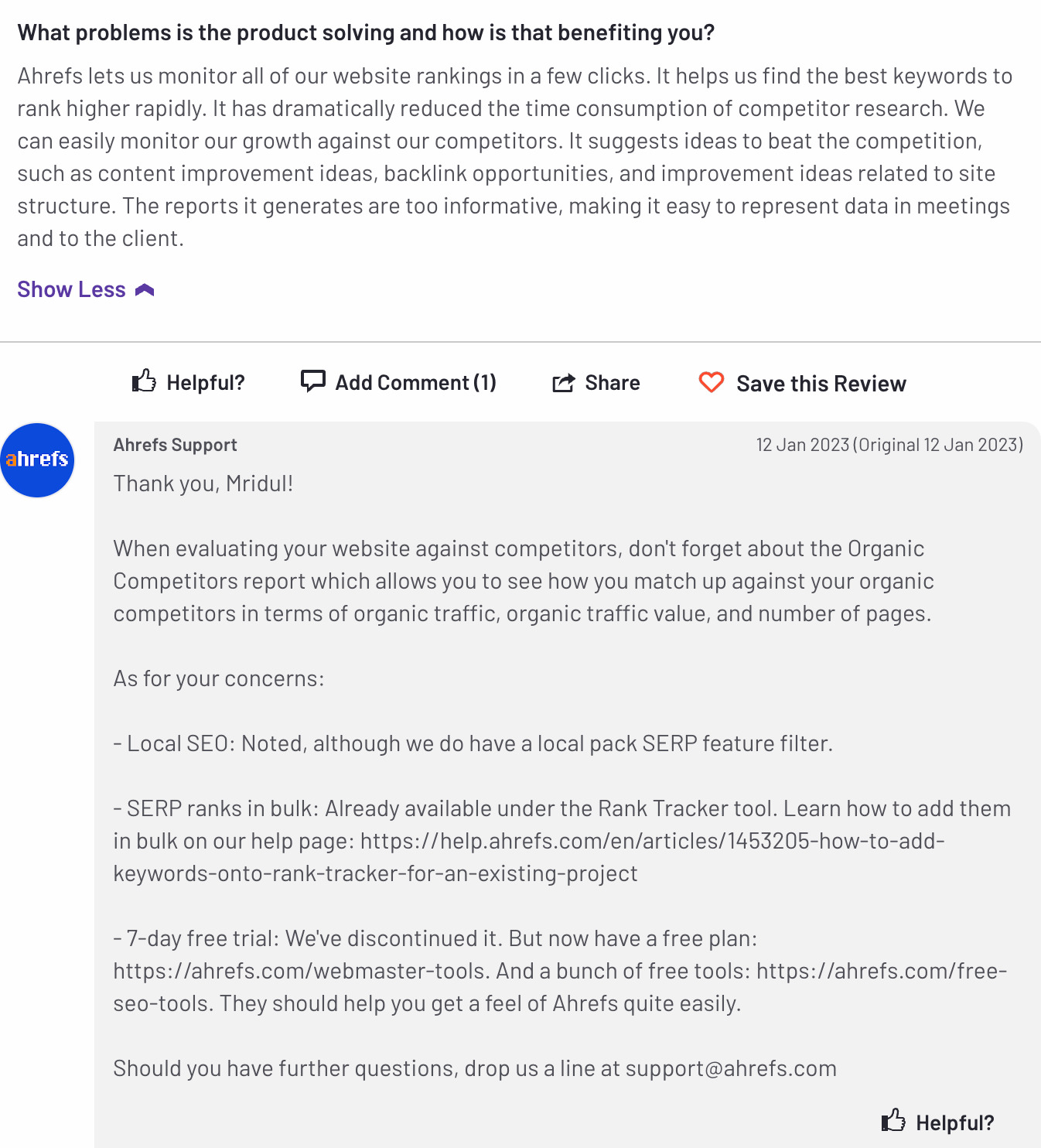
Create a versus page



Teach them how to use your product


Offer a free version of your product
4. Action
Final thoughts

 Koichiko
Koichiko 











